Doctoral advisor R. Hans Brink | Name Esther Lederberg | |
 | ||
Born Esther Miriam ZimmerDecember 18, 1922Bronx, New York ( 1922-12-18 ) Fields MicrobiologyMicrobial Genetics Institutions Stanford UniversityUniversity of Wisconsin Known for Lambda phage, specialized transduction, replica plating, fertility factor F, Plasmid Reference Center Similar People Joshua Lederberg, Edward Lawrie Tatum, Gunther Stent, Edward Feigenbaum, Sydney Brenner | ||
Esther Miriam Zimmer Lederberg (December 18, 1922 – November 11, 2006) was an American microbiologist and a pioneer of bacterial genetics. Notable contributions include the discovery of the bacterial virus λ, the transfer of genes between bacteria by specialized transduction, the development of replica plating, and the discovery of the bacterial fertility factor F (F plasmid).
Contents
- Early years
- Contributions to microbiology and genetics
- bacteriophage and specialized transduction
- Bacterial Fertility Factor F
- Replica plating
- Later contributions
- Professional honors
- Professional challenges gender discrimination
- Other interests
- Music
- Literature
- Botany and botanical gardens
- Notable papers
- References
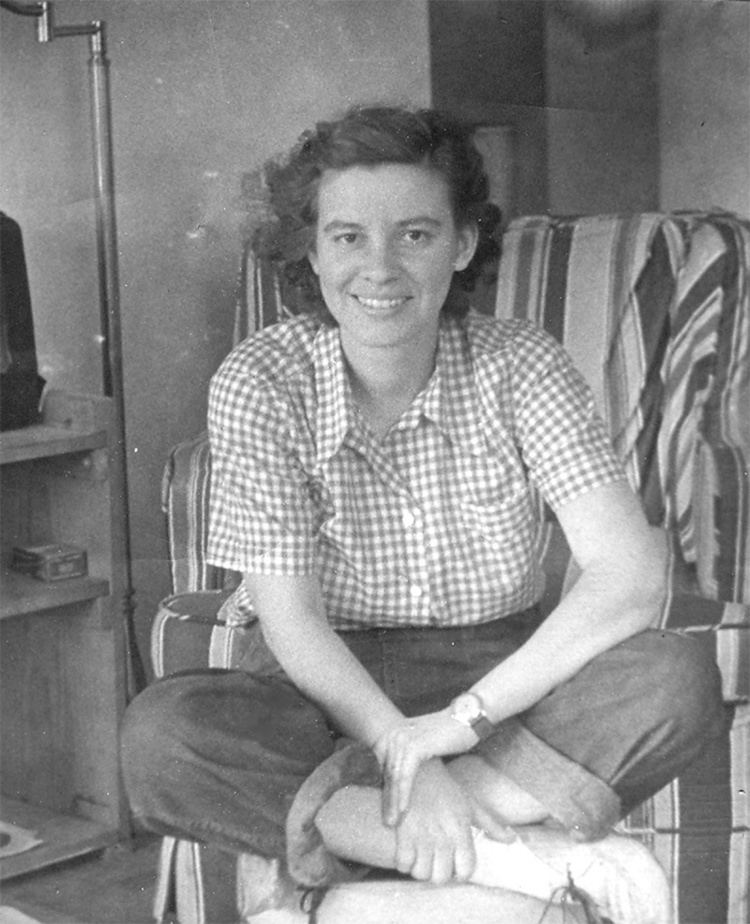
Lederberg also founded and directed the now defunct Plasmid Reference Center at Stanford University, where she maintained, named, and distributed plasmids of many types, including those coding for antibiotic resistance, heavy metal resistance, virulence, conjugation, colicins, transposons, and other unknown factors.
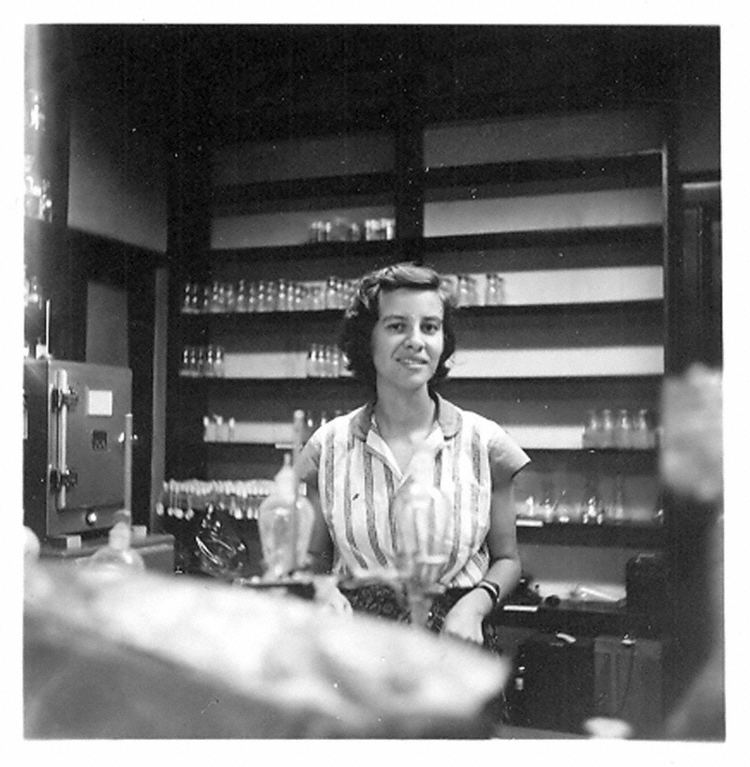
Early years

Esther Miriam Zimmer was the first of two children born in the Bronx, New York, to David Zimmer and Pauline Geller Zimmer. Her brother, Benjamin Zimmer, followed in 1923. A child of the Great Depression, her lunch was often a piece of bread topped by the juice of a squeezed tomato.
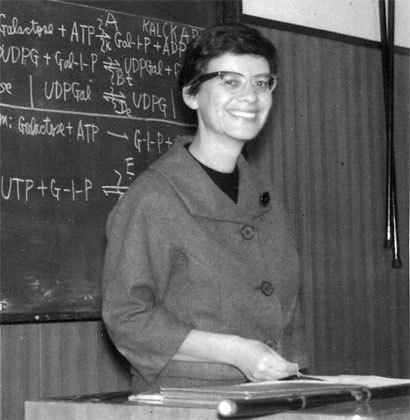
Zimmer thrived academically. She attended Evander Childs High School in the Bronx, receiving honors for French and graduating at the age of 16. In college, Zimmer initially wanted to study French or literature, but she switched her field of study to biochemistry against the recommendation of her teachers, who felt women struggled to get a career in the sciences. She worked as a research assistant at the New York Botanical Garden, engaging in research on Neurospora crassa with the plant pathologist Bernard Ogilvie Dodge. She received a bachelor's degree in genetics at New York City’s Hunter College, graduating cum laude in 1942, at the age of 20.
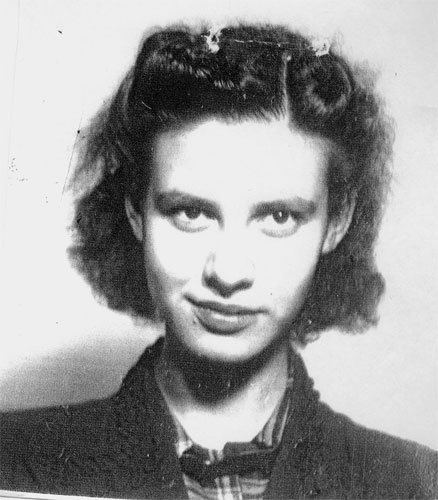
After her graduation from Hunter, Zimmer went to work as a research assistant to Alexander Hollaender at the Carnegie Institution of Washington (later Cold Spring Harbor Laboratory), where she continued to work with N. crassa as well as publishing her first work in genetics. In 1944 she won a fellowship to Stanford University, working as an assistant to George Wells Beadle. She traveled west to California, and after a summer studying at Stanford University's Hopkins Marine Station under Cornelius Van Niel, she entered a master's program in genetics. Stanford awarded her a master's degree in 1946. That same year, she married Joshua Lederberg, a professor at the University of Wisconsin.
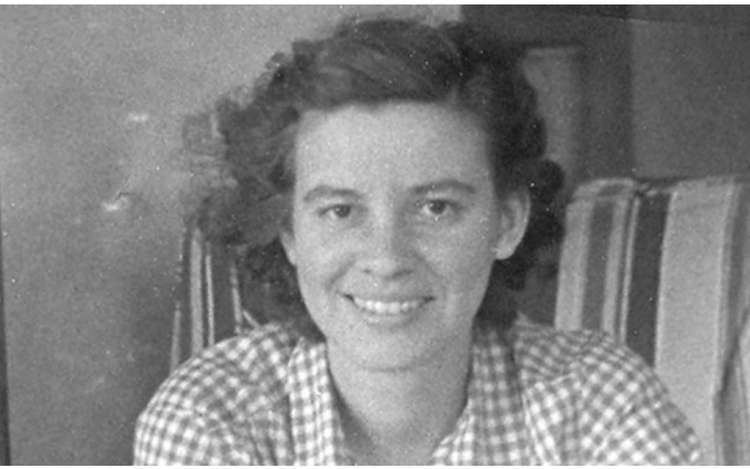
Lederberg next went to the University of Wisconsin to pursue a doctorate degree. From 1946 to 1949, she was awarded a predoctoral fellowship by the National Cancer Institute. Her thesis was "Genetic control of mutability in the bacterium Escherichia coli." She completed her doctorate under the supervision of R. A. Brink, in 1950.
Contributions to microbiology and genetics
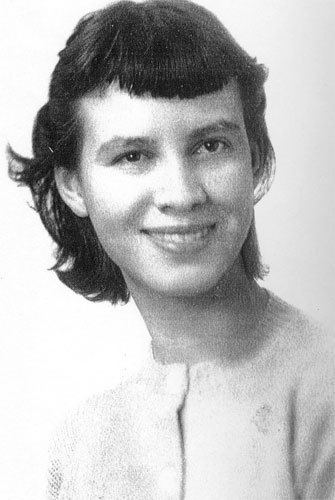
Lederberg remained at the University of Wisconsin for most of the 1950s. It was there that she discovered lambda phage, did early research on the relationship between transduction and lambda phage lysogeny, discovered the E. coli F fertility factor with Luigi Luca Cavalli-Sforza (eventually publishing with Joshua Lederberg), devised the first successful implementation of replica plating with Joshua Lederberg, and helped discover and understand the genetic mechanisms of specialized transduction. These contributions laid the foundation for much of the genetics work done in the latter half of the twentieth century.
λ bacteriophage and specialized transduction
Esther Lederberg was the first to isolate λ bacteriophage. She first reported the discovery in 1951 while she was a PhD student and later provided a detailed description in a 1953 paper in the journal Genetics. She was working with an E. coli K12 strain that had been mutagenized with ultraviolet light. When she incubated a mixture of the mutant strain with its parent E. coli K12 strain on an agar plate, she saw plaques, which were known to be caused by bacteriophages. The source of the bacteriophage was the parental K12 strain. The UV treatment had "cured" the bacteriophage from the mutant, making it sensitive to infection by the same bacteriophage that the parent produced. The bacteriophage was named λ.
Lambda phage genetic material consists of a double-stranded DNA molecule with 5' twelve-base-pair sticky ends (cos sites), which permit circularization of the DNA molecule. It shows a lytic cycle and a lysogenic cycle. Studies on the control of these alternative cycles have been very important for our understanding of the regulation of gene transcription.
Lambda phage is considered a 'temperate bacteriophage': one whose genome incorporates with and replicates with that of the host bacterium. Uses for lambda include its application as a vector for the cloning of recombinant DNA; the use of its site-specific recombinase, int, for the shuffling of cloned DNAs by the 'Gateway' method; and the application of its Red operon, including the proteins Red alpha (also called 'exo'), beta, and gamma, in the DNA engineering method called recombineering.
Her 1950 lambda phage paper led to an understanding of specialized transduction.
A permanent exhibit in the "DNAtrium" of The Eli and Edythe L. Broad Institute of Massachusetts Institute of Technology honors Esther M. Zimmer Lederberg as the discoverer of lambda phage.
Bacterial Fertility Factor F
The Fertility Factor (also known as F Factor) is a bacterial DNA sequence that allows a bacterium to produce a sex pilus necessary for conjugation. The sequence contains 20 tra (for "transfer") genes and a number of other genetic sequences responsible for incompatibility, replication, and other functions. The F factor is carried on an episome, which can either exist as an independent plasmid or integrate into the bacterial cell's genome.
Esther Lederberg's discovery of F stemmed directly from her experiments to map the location of lambda prophage on the E. coli chromosome by crosses with other E. coli strains with known genetic markers. When some of the crosses failed to give rise to recombinants, she suspected that some of her E. coli strains had lost a "fertility factor." In her own words:
In terms of testing available markers ... the data showed that there was a specific locus for lysogenicity. ... In the course of such linkage [genetic mapping] studies,...one day, ZERO recombinants were recovered....I explored the notion that there was some sort of 'fertility factor' which if absent, resulted in no recombinants. For short, I named this F. A number of experiments were designed to clarify these observations.
Replica plating
Although there were other less efficient forerunners to the methodology (such as paper, or multipronged arrays using wire brushes, toothpicks, etc.), the problem of reproducing bacterial colonies en masse in the same geometric configuration as on original agar plate was first successfully solved by replica plating, as implemented by Esther M. Zimmer Lederberg.
Scientists had been struggling for a reliable solution for at least a decade before Esther Lederberg finally implemented it successfully.
Allan Campbell, Eugene Nester and Stanley Falkow all recount how Esther Lederberg provided them with the technical information necessary to successfully use this new methodology. From Alan Campbell:
Who successfully implemented the technique? Here Esther at least refined the process considerably. I remember (from her and others) that she was the one who went to the fabrics store and selected velvet of the best thickness, pile, etc. to give the cleanest prints.
Eugene Nester said:
I wanted to respond to your question about replica plating and who really invented it. I think it will be very difficult to answer that question in a convincing way. That technique was developed before I ever knew the Lederbergs ... I do know that Esther in all likelihood was responsible for getting the technique to actually work. She emphasized to me how important it was to use a particular kind of Italian velvet (or was it velveteen actually), so in my own mind I believe she was the key person in taking the idea to actual practice.
In Falkow's case, this happened a few years after she first published the replica plating paper. At the memorial for Esther Lederberg, he spoke of the impact of replica plating, and his feelings upon meeting the originator of the technique:
It was brilliantly simple: creative discoveries often are. She thought of using ordinary velveteen from a yard goods store to serve as a kind of rubber stamp. The tiny fibers of the velveteen acted like hundreds of tiny inocculating needles. The pad was carefully kept in the same orientation and used to inocculate a series of agar plates containing different media containing antibiotics or supplemented with essential nutrients such as amino acids and vitamins. Esther and Joshua used this technique as an indirect selective method to prove the spontaneous origin of mutants with adaptive advantages. ...
All of these things foreshadowed our first meeting and I was appropriately in awe of her. I was just starting to use replica plating in my own work and Esther immediately told me what brand of velveteen to look for and to be sure to wash the velveteen before I used them and even what detergent to use to wash them.
Later contributions
Esther Lederberg returned to Stanford in 1959 with Joshua Lederberg. She remained at Stanford for the balance of her research career, founding and directing the Plasmid Reference Center (PRC) at the Stanford School of Medicine from 1976 to 1986.
At first, plasmids were of great interest due to their ability to confer inheritable resistance to antibiotics, thus were referred to as "R-Factors" or "R plasmids". As time passed, the nomenclature was changed to "Plasmids" (in general) to take into account other factors in addition to antibiotic resistance, such as genes for specific activity (gal, lac, ara, etc.) and temperature sensitivity. (For example, plasmid pSC304 used Kretschmer's protocol to establish temperature sensitivity. See P. J. Kretschmer and S. N. Cohen, 1977, J. Bacteriology, 130, 888-899.)
The PRC coordinated closely with the members of the Plasmid Nomenclature Committee (Royston Clowes, Stanley N. Cohen, Rob Curtiss III, Naomi Datta, Stanley Falkow, and Richard P. Novick), assigning prefixes to plasmids, and numbers to Insertion Sequences and Transposons.
She retired from her position in the Stanford Department of Microbiology and Immunology in 1985, but continued to run the PRC for almost another full decade after that.
Professional honors
In 1985, Lederberg was honored as an emeritus professor in microbiology and immunology at Stanford University.
In 2010, Stanford University dedicated part of Clark Walk to Esther M. Zimmer Lederberg. (Clark Walk is a series of granite blocks that memorialize various Stanford scientists and events in the history of the Stanford School of Medicine, located between the Sherman Fairchild building and the Li Ka Shing Pavilion.)
A black granite block shows a photograph of Esther Lederberg in the laboratory, a page from one of her notebooks, and quotes from two close colleagues:
Len Herzenberg:
Joshua and Esther Lederberg established their own group and worked on bacterial genetics. Studying with Edward Tatum, they discovered sex, or genetic exchange in bacteria, which won him the Nobel Prize shortly after he arrived at Stanford. The process they developed became a way to transfer genetic information between bacteria.
Stanley Falkow:
Esther Lederberg developed a method of replica plating using velveteen attached to a piston ring. The rings are pressed onto bacterial colonies and then stamped onto a series of plates. She advanced many of the early lab procedures and also discovered lambda phage, which became a widely used tool in microbial genetics.
Professional challenges: gender discrimination
Stanley Falkow said of Esther Lederberg that "Experimentally and methodologically she was a genius in the lab." However, although Esther Lederberg was a pioneer research scientist, she faced significant challenges as a woman scientist in the 1950s and 1960s.
Lederberg was excluded from writing a chapter in the 1966 book Phage and the Origins of Molecular Biology, a commemoration of molecular biology. According to the science historian Prina Abir-Am, her exclusion was "incomprehensible" because of her important discoveries in bacteriophage genetics. Abir-Am attributed her exclusion in part to the sexism that prevailed during the 1960s.
As Luigi Luca Cavalli-Sforza later wrote, “Dr. Esther Lederberg has enjoyed the privilege of working with a very famous husband. This has been at times also a setback, because inevitably she has not been credited with as much of the credit as she really deserved. I know that very few people, if any, have had the benefit of as valuable a co-worker as Joshua has had.”
Esther Lederberg had to fight to gain a position on the Stanford faculty. Retained as a Senior Scientist, in 1974 she was forced to transition to a position as Adjunct Professor of Medical Microbiology “coterminous with research support.” (Adjunct Professors are typically un-tenured.)
Allan Campbell noted the injustice of Stanford’s attitude toward women scientists in a letter of recommendation for Esther Lederberg, written in 1971: “I think she is a definite asset to the University and merits promotion according to the normal customs of your department (i.e., that your Committee on Women’s Promotions should recommend advancement on the same time schedule as a Committee of Men’s Promotions would advance a male scientist).“
Other interests
Esther Lederberg had cultural interests that went well beyond science.
Music
A lifelong musician, Lederberg was a devotee of early music. She was one of the founding members of the Mid-Peninsula Recorder Orchestra (affiliated with the San Francisco Early Music Society) in 1962, serving as its president for several years. At the memorial held for Dr. Lederberg at Stanford University, Frederick Palmer, musical director of the Mid-Peninsula Recorder Orchestra, spoke of Esther’s joy in this music, and her dedication to the MPRO:
One of the frustrations of anyone directing a musical ensemble made up of volunteers is wondering who will show up for rehearsals and if all of the parts will be adequately covered. I never had to worry about Esther. Even after her health began to fail and she was required to use a walker, Esther seldom missed one of the orchestra's meetings, and she insisted on playing in the concerts that the orchestra presented despite her limited mobility.
Always conscious that much of early music was really dance music, Lederberg also studied Renaissance and Elizabethan dance.
She loved symphonic music, opera, and the operettas of Gilbert and Sullivan.
Literature
Esther's taste in literature was eclectic; her library included both classics and contemporary works by such authors as Gore Vidal, Ursula K. Le Guin, and Margaret Atwood. A scientist who could suspend disbelief enough to actually enjoy some 'science fiction', Esther nevertheless took issue with Michael Crichton's handling of the alien antagonist in his novel, Andromeda Strain. Her second husband, Matthew Simon, recounts:
Esther commented that "Crichton never got it right." I asked her what she meant, and she replied that if an extraterrestrial life form were caught in an outer space probe and brought back to Earth, whatever would counteract it would with high probability be caught along with it in the same probe, because living things are always surrounded in their environment by those things that counteract it. "They should simply have looked in the same net," she said. "They would have found what they needed to control the alien life form."
Lederberg also loved the works of Charles Dickens and Jane Austen. She belonged to societies devoted to studying and celebrating these two authors, the Dickens Society of Palo Alto and the Jane Austen Society.
Botany and botanical gardens
Lederberg maintained a lifelong love of botany and botanical gardens. She encouraged the planting of indigenous plants such as poppies and lupins around the Stanford University campus, arguing that as well as being beautiful such plants would not need to be watered—an important consideration to a campus located in the San Francisco Bay Area, which has frequent droughts.
She married Joshua Lederberg in 1946; they divorced in 1968. She married Matthew Simon in 1993.
Esther Miriam Zimmer Lederberg died November 11, 2006, from pneumonia and congestive heart failure, at the age of 83.
Notable papers
For a list of all known papers authored or co-authored by Esther M. Zimmer Lederberg, see http://www.scientificlegacies.org/esther-lederberg.html.
